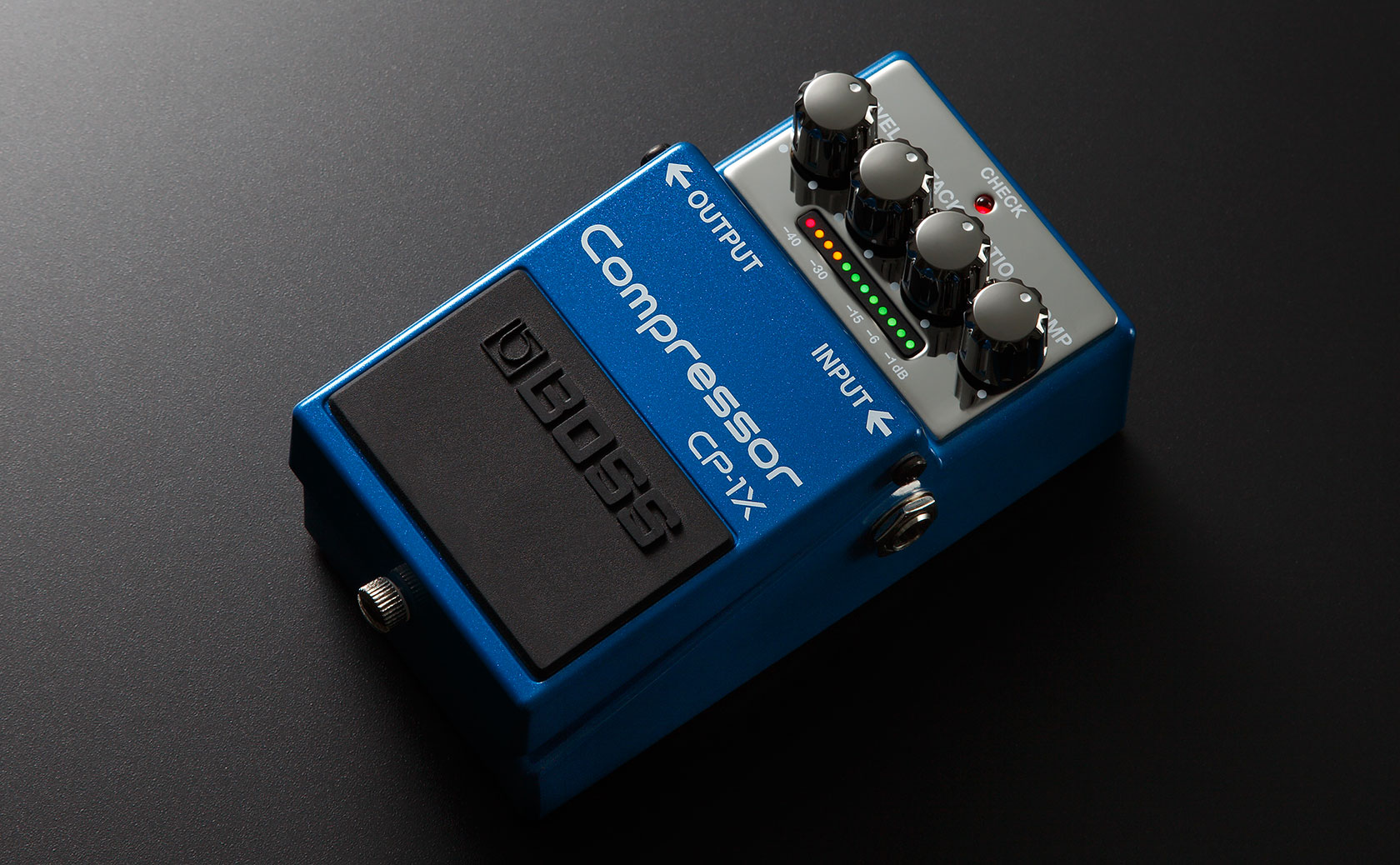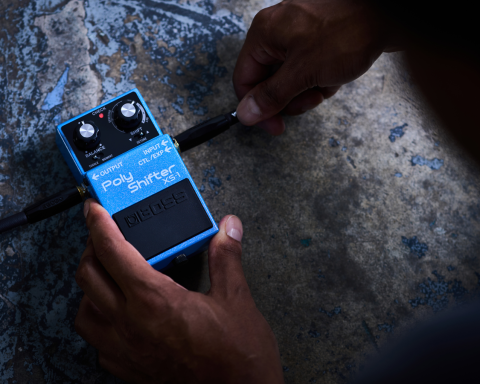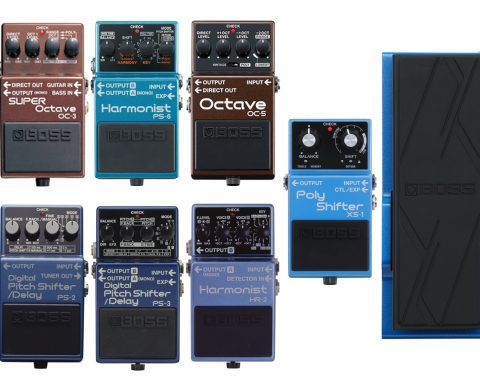Unlike overdrive, delay, and other effects, compression provides no immediate shift to one’s guitar tone. For that reason, it’s easy to overlook. As functional as a compressor pedal is, players can use them in several ways. Some applications are practical, while others are more creative and expansive. Despite its subtlety, compression is a valuable tool that can accentuate desirable guitar sounds, making it essential to any professional player’s pedalboard. Learn to use a compressor and open up a world of sonic possibilities.
What is Compression?
Initially born as a studio effect, compression aims to reduce the instrument’s dynamic range. That might seem like an unusual task, as dynamics are an essential part of what makes the guitar so versatile. However, what a compressor does cleverly is enhance quietly-played notes. In addition, it reduces notes played too loudly. The result is a more cohesive, even guitar tone. It allows the guitar to sit well in a mix with other instruments without jumping out or getting lost.
Still, a compressor pedal’s purpose extends beyond that primary function. It can also act as a tone-shaping tool. Reducing dynamics and leveling out the tonal characteristics of a guitar creates a natural signal boost. A guitar’s treble frequencies get enhanced and become more present with reduced dynamics.

"A compressor allows the guitar to sit well in a mix with other instruments without jumping out or getting lost. "
As with almost all effect types, pedal makers have used different methods to create compression. Each has its characteristics, advantages, and disadvantages. Let’s investigate the different compression types and how they operate on a signal.
Compression Types
VCA
VCA (Voltage Controlled Amplifier) compression is the most common. It’s transparent and can quickly compress and release the note played, making it a natural-sounding compression type. Also, it can compress to a higher level than other compressor types. This flexibility makes VCA an ideal tool for a variety of situations, styles of playing, and instrument types.
The legendary BOSS CS-2 and the still popular CS-3 are both examples of VCA-style compressors. In a testament to how efficient, versatile, and well-loved the CS-3 is, it has remained unchanged since 1986. Its simplicity and range of uses make it an ideal starting point for any player beginning their compression journey.
Optical
The other two popular types of compression (although there are more beyond these) are Optical and FET. Optical compression converts an audio signal into light. A sensor then detects and adjusts gain based on the brightness of the LED. The harder one plays the guitar, the more light gets created by the LED. The sensor detects this and reduces the output level.
Optical compression can be very natural sounding. Yet it tends to create a blooming effect at higher settings as it struggles to keep up with the speed of attack and release. This isn’t necessarily a disadvantage, just a characteristic of the compression type.
FET
FET (Field Effect Transistor) compressors operate by mimicking the reaction of amplifier valves. They are naturally snappy-sounding compressors and add a noticeable color to the guitar tone. While this might not be ideal for those looking for a transparent sound, FET compressors create a classic guitar tone, ideal for funk and reggae.
"Think of a compressor pedal as an extension of the picking hand. Its primary purpose is to level out guitar volume from note to note, improving picking technique."
Setup Considerations
Think of a compressor pedal as an extension of the picking hand. Its primary purpose is to level out guitar volume from note to note, improving picking technique. With this in mind, it’s essential to position a compressor as close to the top of the effects chain as possible. Placing it after any other effects will compress that effect’s natural tone. Putting it after the drive diminishes overdrive dynamics, squashing harmonic characteristics and muddying tone. After delays or reverbs, a compressor will boost the delay tails or reverb decay, muddying what should be a dynamic effect.
FIVE COMPRESSOR PEDAL USES
1. Compression for Chicken Picking
That classic, super clean, country fingerpicking tone is one of the most straightforward ways to use a compressor pedal. Usually, a compressor’s purpose is to emulate a more even picking technique. However, with this application, we’re looking to squeeze the guitar’s dynamic range beyond what is naturally possible.
For a chicken-picking tone, turn the sustain control to full clockwise rotation. This setting will bring up the noise floor of the pedal but also remove virtually any playing dynamics, which is desirable for this effect. Depending on the type of compressor, the ratio control will need to be at its highest, or the attack control will need to be at its fastest. A slow attack would create a natural-sounding compression, which we do not want to achieve with this setting.
2. Cleaning up a Solo
Conversely, we can use compression to naturally even out playing dynamics without being too obvious. While this isn’t necessary for strummed chords, creating a more consistent tone for speedy solos in the upper register is beneficial. Naturally, there is variation in the volume of each note, especially when playing at speed. Adding gentle compression helps reduce that, bringing up the weaker played notes and tempering the harsher ones.
Introducing a compressor for guitar solos not only cleans up playing but can also boost a signal. Use the level control to push your volume slightly above unity. This will function similarly to a treble booster, allowing all the zingy presence of high notes to ring out. It’s also ideal for ensuring each note is clearly in the mix with other instruments.
"Introducing a compressor for guitar solos not only cleans up playing but can also boost
a signal."
3. Harmonics
When used to balance the volume of an instrument, a compressor is often considered an always-on effect, essential as an amp’s EQ. Compressor pedals are so practical they get overlooked as an effect to create new and exciting sounds.
Juan Alderete de la Peña is an excellent example of a player who uses a BOSS CS-2 to enhance plucked harmonics. He uses the attack and sustain set relatively high. This setting increases the noise floor and allows the volume of a plucked harmonic to sit at parity with a typical note. The result is a rich, vibrant, treble-heavy tone perfect for players who like integrating harmonics into their music.
4. Bass
Compression is likely more common for bass players than for guitarists. Although there are uses for both instruments, fingerstyle bass players often use a compressor as the backbone of their tone. Compression evens out any inconsistencies in their picking technique.
This is partially because bass players often rely far less on dynamics than guitar players. When holding down the fundamental note progression alongside a drummer, it’s desirable to sound as consistent as possible. A compressor can achieve this to significant effect. The BOSS CS-2, CS-3, and BC-1X are all extremely popular among bass players. Each can create a subtle, natural compression.
5. Fattening up Guitar Tone
Because a compressor can act to squash a guitar tone slightly, it effectively thickens thin-sounding guitars. This is effective for guitarists using single-coil instruments who want to emulate a humbucking guitar.
To achieve this effect, use a light amount of compression. Then utilize the sustain control to dial in the desired amount of tone thickening. The approach adds oomph to a guitar tone without swapping instruments in the middle of a set.
"Because a compressor can act to squash a guitar tone slightly, it effectively thickens thin-sounding guitars."
A Transparent Tool
Compression can subtly thicken a tone, even out playing, or aggressively boost picked progressions. They’re an excellent addition to a pedalboard for creative application or as a sonic backbone. A compressor pedal is a transparent tool that can elevate the sound of guitarist’s whole rig in a refined manner.






